The smallish city of Chiang Rai, not to be confused with its bigger cousin of Chiang Mai, (187 km south), is a good city for temple drifting and coffee sipping.
During a week in this laid-back town, I walked to places of interest. Keep in mind, walking isn’t for everyone. There are tuk tuks, taxis and Grab, (Uber clone).
Although I partly got used to it, sidewalks in Chiang Rai weren’t designed with ergonomic consideration. This is often the case on Indochinese sidewalks.
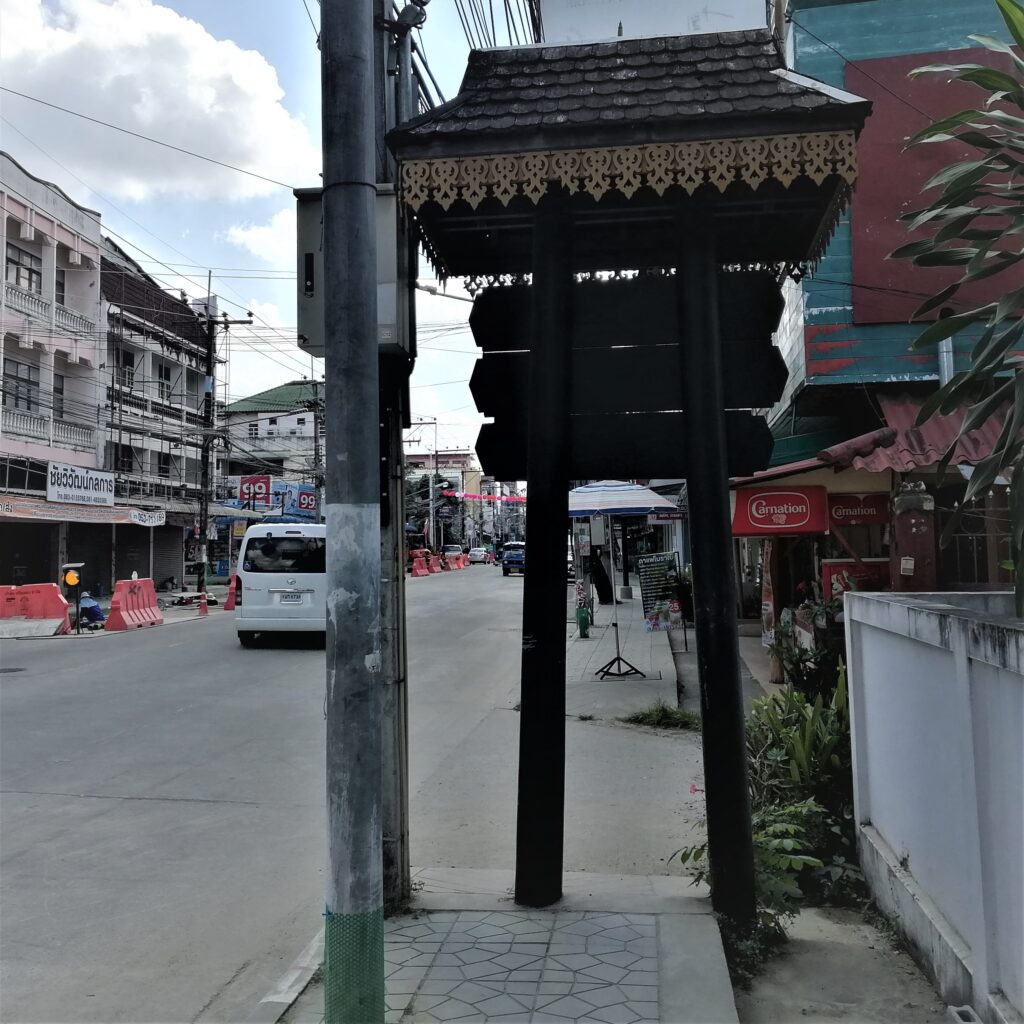
You sort of get used to it and adapt. And when you need to walk into the street, which is often, don’t forget they drive on the left, and be in the habit of looking both ways.
While much is walkable in Chiang Rai, there are worthwhile sites that require a short bus or taxi ride.
Coffee Shops
If you’re walking around looking for a coffee shop, one will appear. The same holds true for temples adorned with statues and intricate far-eastern architecture.
Like churches and mosques across the earth, these architectural works of wonder provide a pleasing respite from sitting on a laptop in a cooled, modern coffee shop.
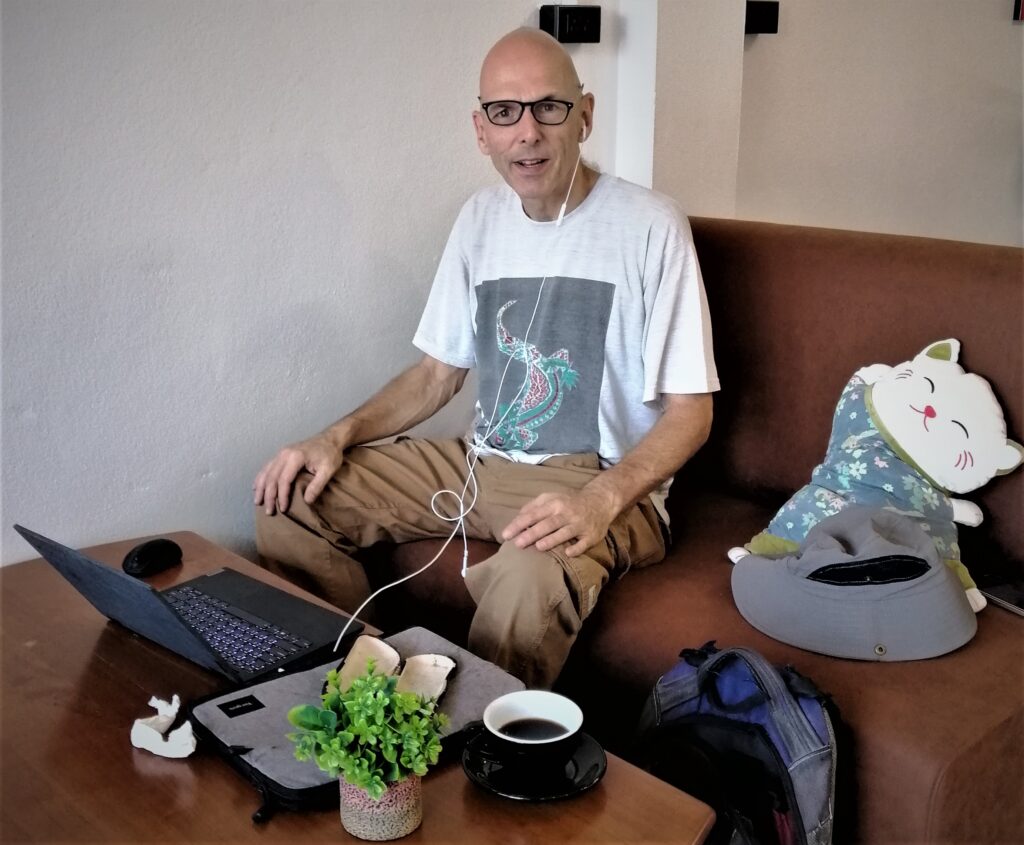
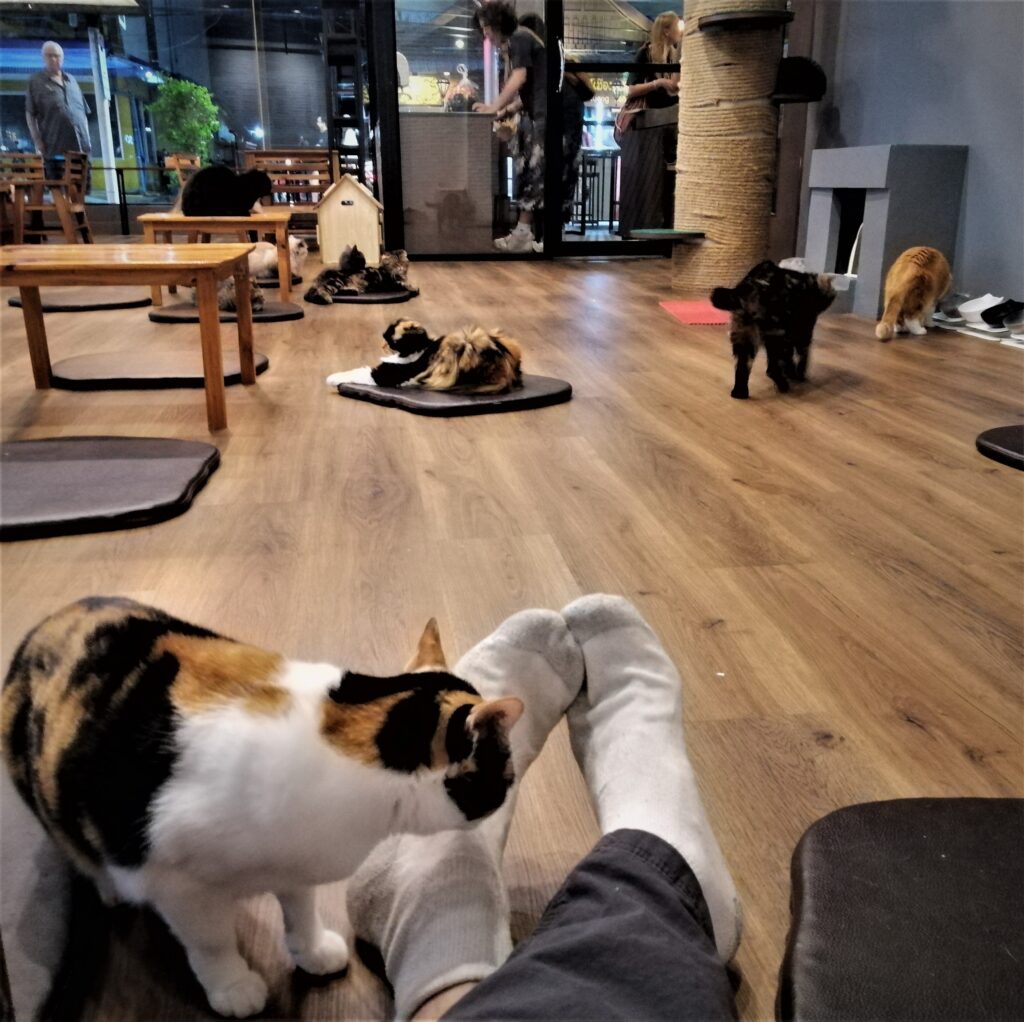
I’d heard of cat cafés as a Korean invention that the Japanese adopted. This ingenious surrogate-cat idea has obviously spread to Thailand.
You can hang out, have a cup of coffee, drink or piece of cake. Impressively, they don’t jack the prices up for the feline novelty.
Like most, if not all coffee shops in Thai cities, there’s a great Wi-Fi connection. Patrons seem to be coming and going, so if this chilled-out cat café is full, check back shortly and there will be cushion(s) and a table available.
Once a feline feels comfortable enough, it may approach you.
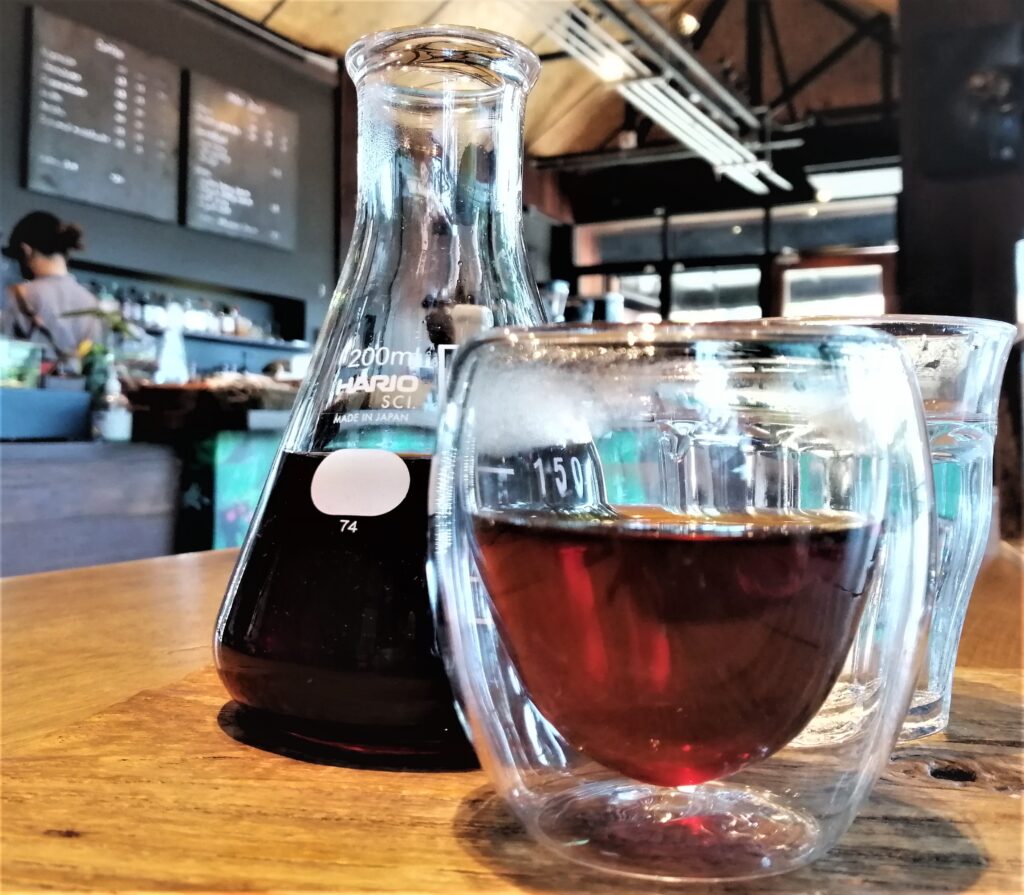
The Roastery by Roj has great ambience, and excellent imported and Thai beans from Roj”s small coffee farm outside the city.
I brought up how I admired the two roasters and other state-of-the-art coffee equipment. He mentioned that he lived on 50 Baht ($1.50) a day while saving to open his shop. He never deviated from his plan. Budgeting diligence helped him secure his own designer coffee shop that’s now frequented by locals and tourists alike.
Almost everything about the Roastery makes it a worthwhile space to visit, including talking to its friendly owner. However, like most, if not all things, it can’t be utopia. The only flaw I found was in the music.
They play low-frequency, modern pop, like a top 40 radio station would, insead of something heartfelt. After sipping eminently-smooth coffee at Roj‘s Roastery, I found myself with shallowly-written lyrics and repetitive riffs buzzing through my head.
With noiseless headphones, the issue is solved.
Temple Drifting
While not in a café, wandering the city streets brought about enchanting temples where I took in exotic architecture and absorbed peaceful vibes.
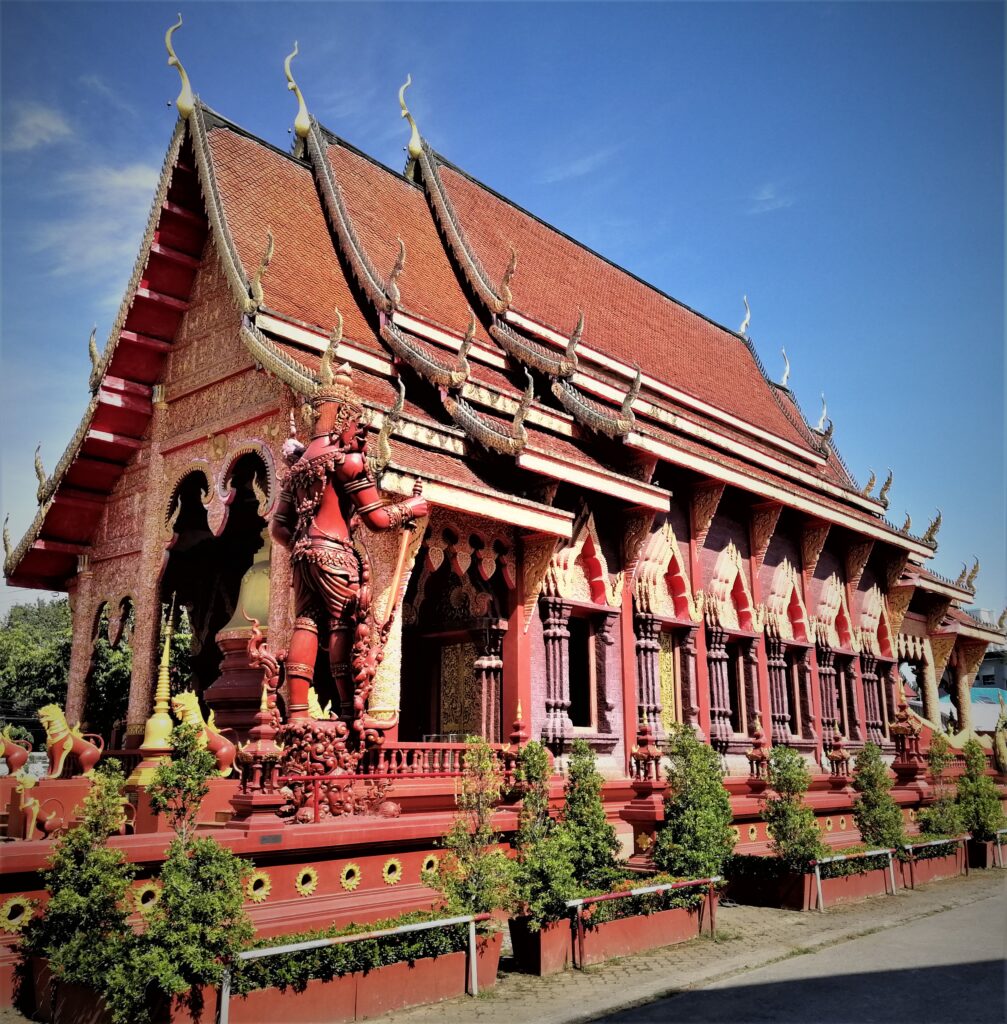
I had no intention of visiting temples in Chiang Rai. However, while rambling its streets, I noticed many and had an epiphany:
Growing up in a western country, a person can’t imagine laying eyes on such old and intricate far-eastern design.
Personal revelation

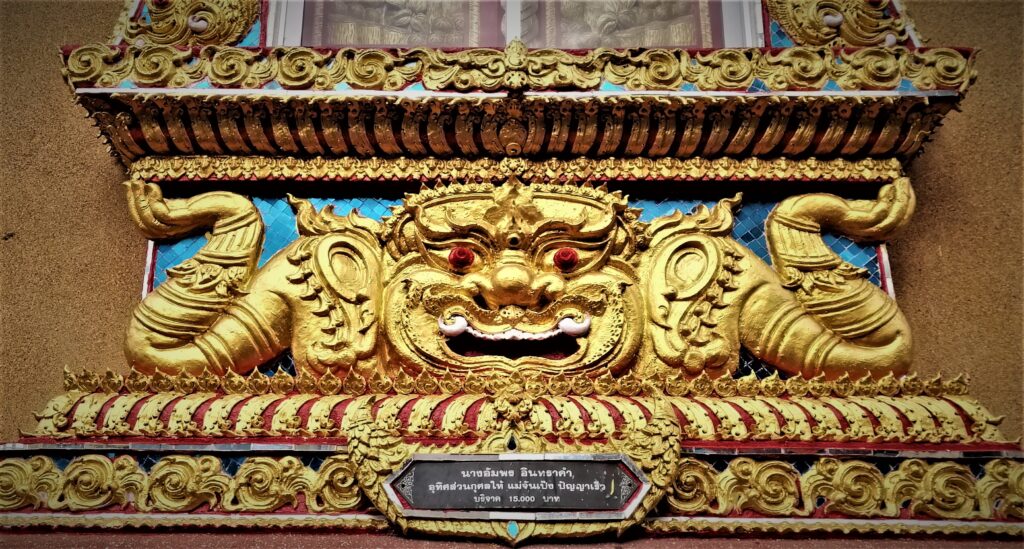
Like with museums, a temple a day is enough as there’s typically a great deal to absorb on one holy site’s grounds.
The Blue Temple
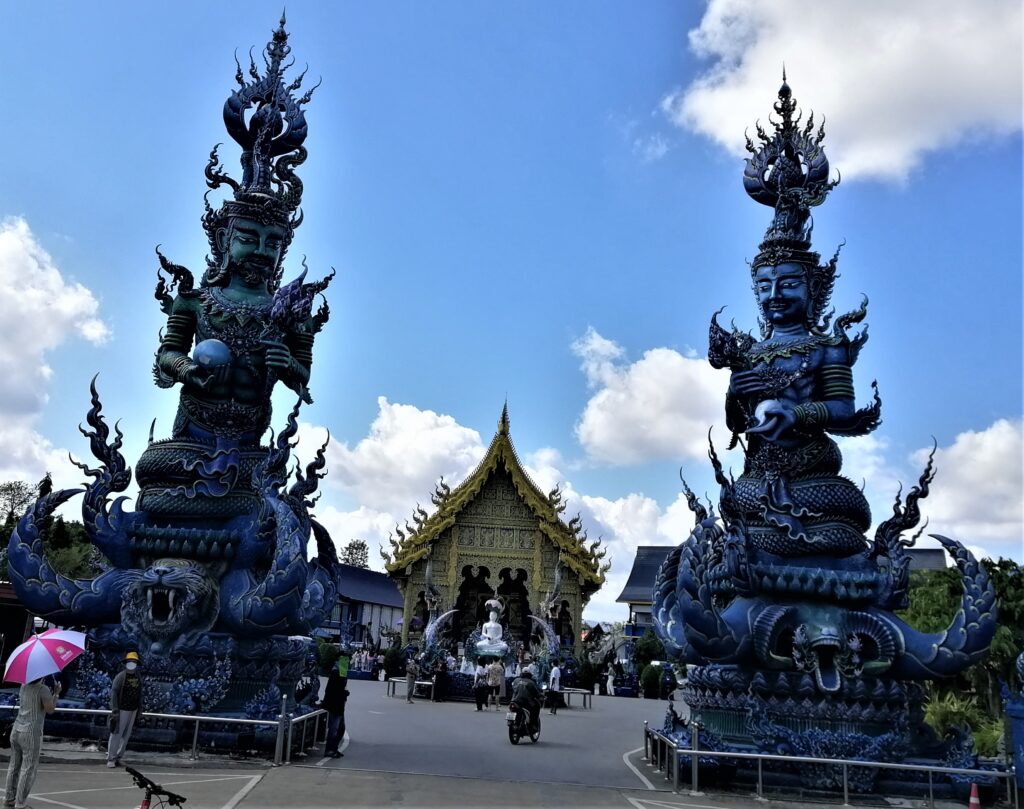
The Blue Temple is famous for excellent reasons.
I managed to walk there from the center of town. However, this requires crossing a big bridge over the Kok River. I was the only person on foot, but it was easy and pedestrian friendly. If you don’t want to do this half-hour to 45 minute walk from the center, take a short taxi or tuk-tuk ride. A driver will be happy for your business.
As everything is subjective, I don’t prefer the term; must see, but if you’re in Chiang Rai, you might want to make it a point to join the rest of the tourists and admire these gaze-worthy grounds.
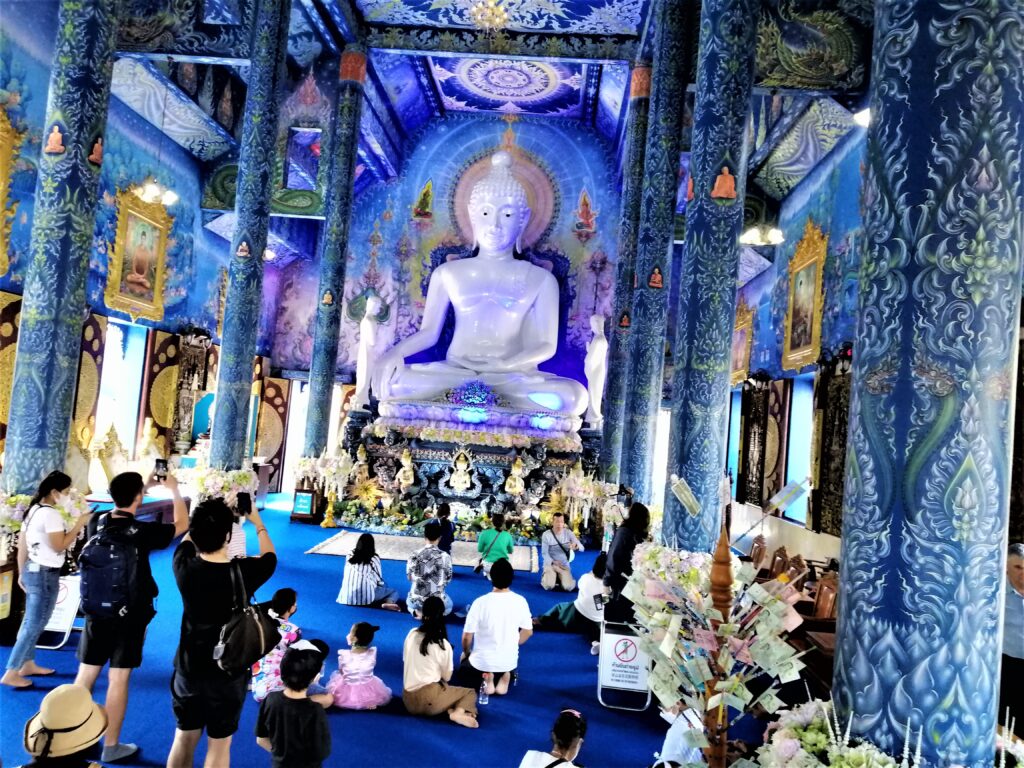
The White Temple
The most famous and visited temple in one of the most celebrated temple cities in the world, is the White Temple.
To get to this architectural world wonder, you must take a taxi or bus. The cheapest solution is the downtown bus station, terminal 1. Buses go frequently in the morning. On the front, the bus clearly says: White Temple. The conductor and passengers will probably let you know once you’re there. You’ll also see it from the bus. If you can say:
Wat Rong Kun.
Then you’ll be even more certain to be on the right bus and dropped off in the proper place. This wat (temple) is 12 km from the small downtown bus terminal.

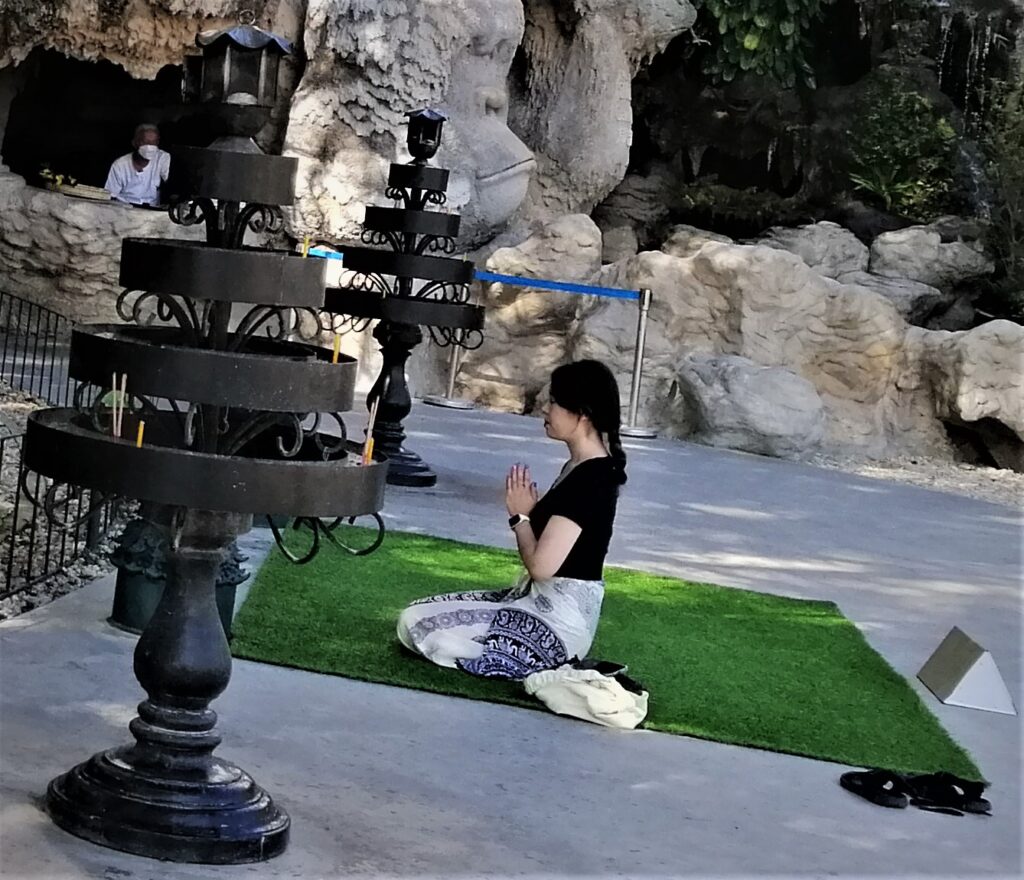
Although popular with international tourists, Thai tourists and locals come and admire the grounds, too.
Kneeling in front of a Buddha statue brings an extra feeling of internal peace.
The White Temple charges foreigners 100 Baht ($3). That’s a fair price that doesn’t tend to dent an outlander’s daily budget too much.
As beautiful as the grounds are, visiting the museum is equally impressive. While the rest of the grounds had a fair deal of people on them, the museum was mostly empty.
It featured visual art from the temple’s architect: Chalermchai Kositpipat. His provocative, ingenious work digs deeply into the human condition.
Titles of Kositpipat's art: Transend Chaos, Free From Impermanence, Attain Nirvana, Concentration, Confused Mind, Morality, Paradise of Mind, Protect the Relics, Social Media Brain, Social Media Devil, and Way of Endeavor.
Visiting this museum elevated me with enlightened introspection. I’m thrilled to have discovered the work of this revered Thai visual artist.
Photos aren’t allowed inside the museum.
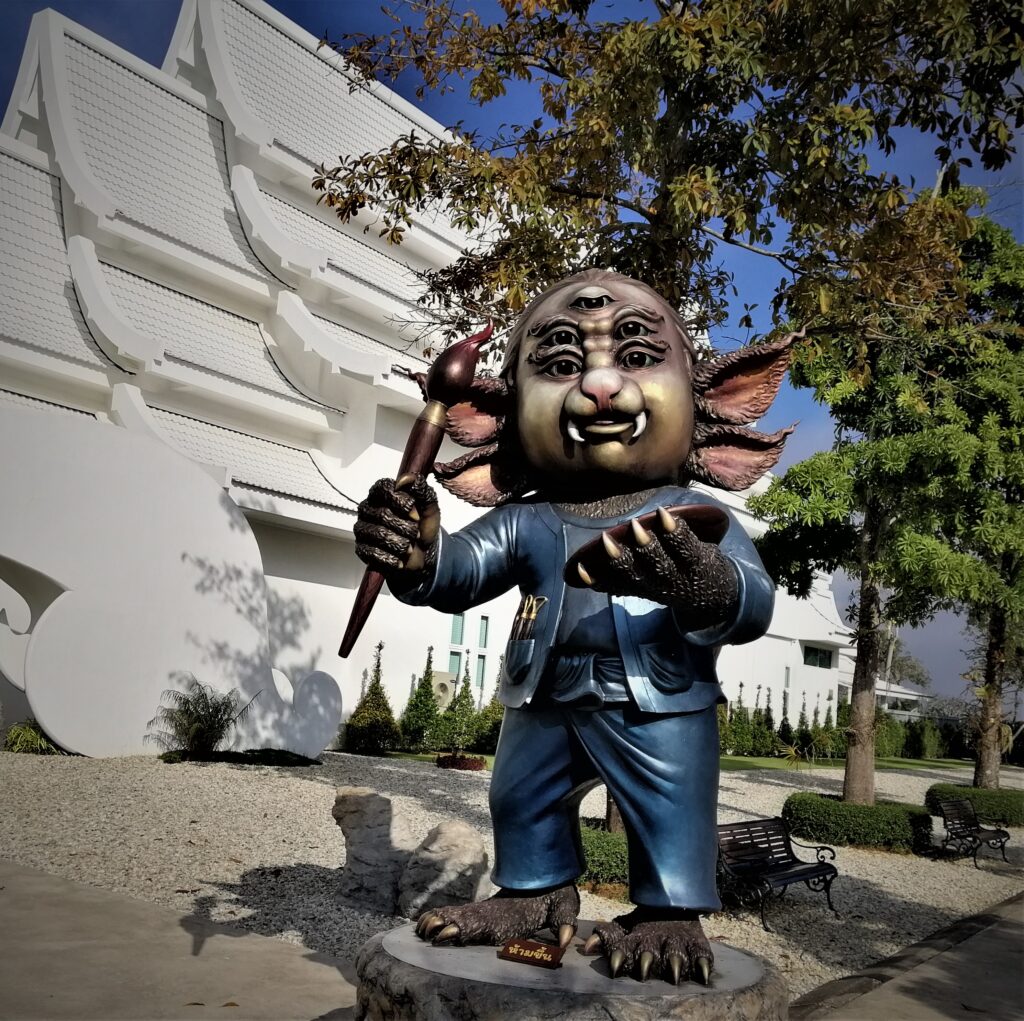
A visit to Chiang Rai may not be complete without seeing the White Temple. And the museum there should have you enthralled.
The Black House
Along with the White Temple, a visit to Baan Dam (Black House) is also a worthwhile journey 9 km from the Blue Temple, and 12 km from downtown. Don’t attempt to walk. I began, but retracted as the road doesn’t have consistent sidewalk integrity.
I paid 100 Baht for a taxi each way. You may need to pay 150. I might have gotten lucky. Haggle calmly and see what happens.
At the Black House the visitor finds a quirky museum dedicated to a unique style of art. There’s alluring far-eastern architecture in a charming outdoor area great for wandering.
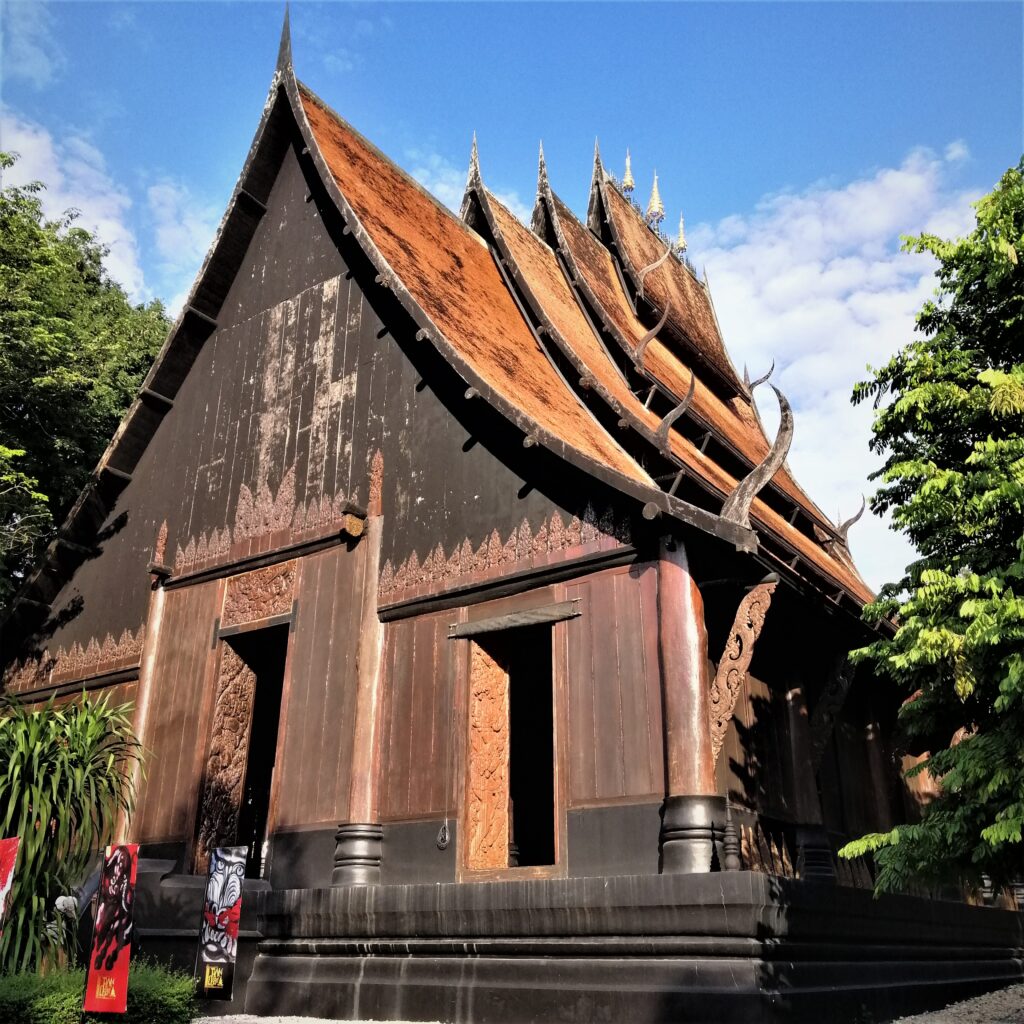
Created by the late Thawan Duchanee, Baan Dam (Black House), blends traditional northern Thai building design with eccentric and modern architecture.

Conclusion
If you’re in Northern Thailand, or on your way in or out of Laos (Huay Xai), I recommend a stopover in climate-friendly Chiang Rai, a city that wholeheartedly welcomes temple wanderers and café haunters.
Have you been to Chiang Rai? What was your favorite spot there? Leave a message in the comments.
Set of photos from Chiang Rai.

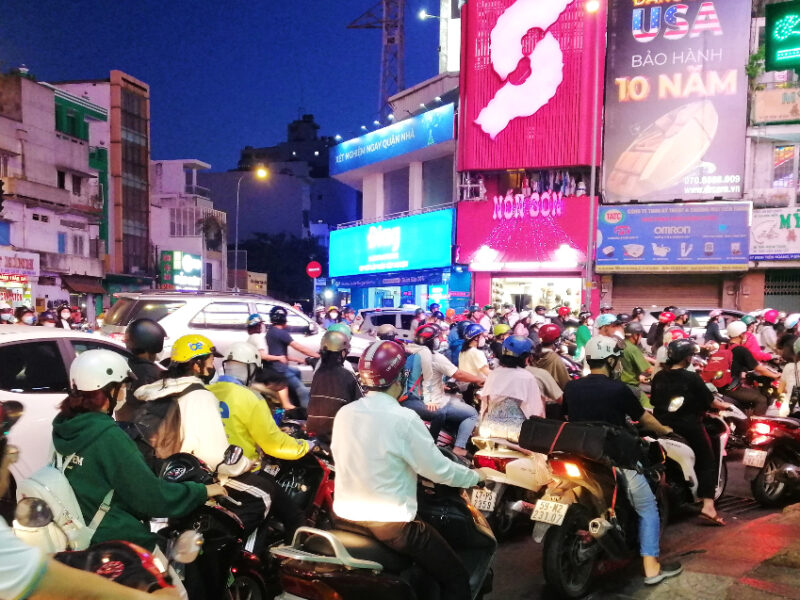
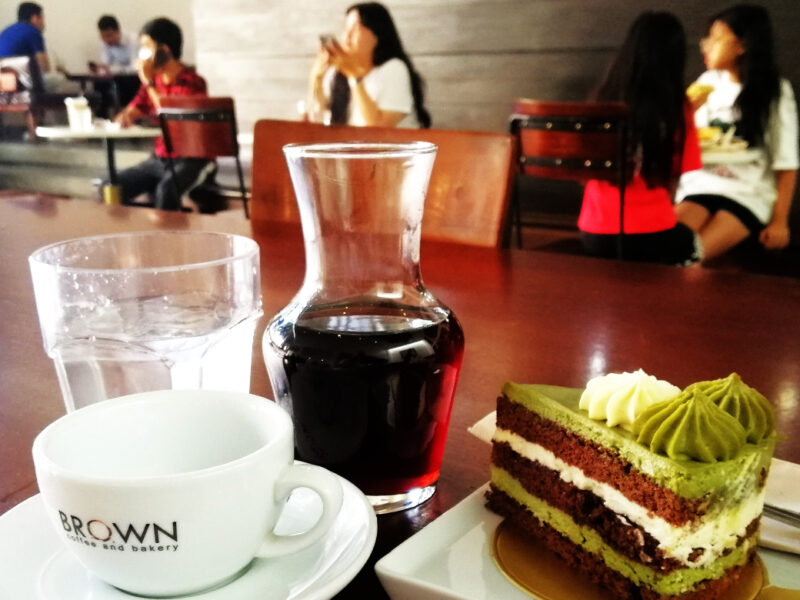
Super interesting. Neat pictures! Thanks!